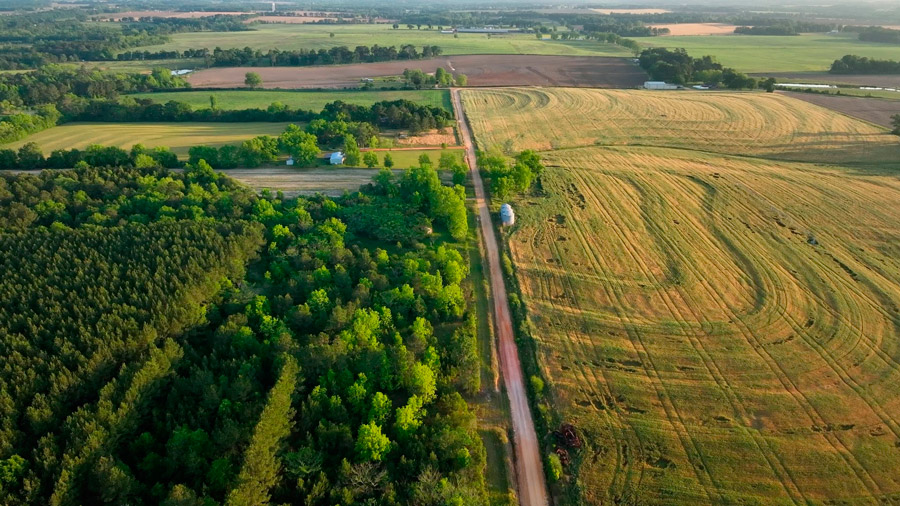When most people purchase land in Alabama, they’re focused on the possibilities.
What can I build here? Can I subdivide? Is this the perfect site for my home, business, or investment project?
But there’s a silent gatekeeper between your vision and your outcome: your zoning classification.
Zoning isn’t just paperwork. It’s the invisible framework that determines what is legally allowed on your property, and what is absolutely off the table unless you’re prepared to fight for it.
Yet far too many landowners, developers, and even experienced builders make critical decisions without truly understanding their zoning. And in Alabama, where regulations vary drastically from county to county (and sometimes block to block), that misunderstanding can cost you time, money, and the viability of your entire project.
In this post, we’ll unpack what zoning really means in Alabama, how to decode your property’s classification, and what happens if you move forward without doing your homework.

What Is Zoning, Really?
Zoning is the regulatory tool that local governments use to divide land into districts, and control how land in each district can be used.
Common classifications include:
- R-1, R-2, R-3: Residential (varying densities and building types)
- AG: Agricultural
- C-1, C-2: Commercial (light or general)
- M-1, M-2: Manufacturing or industrial
- MXD or PUD: Mixed-use or Planned Unit Development
Each zone has its own allowable uses, dimensional standards, setback requirements, and development limitations. Some even include architectural standards, maximum height restrictions, or limitations on short-term rentals.
For example, you might find a 5-acre lot that feels “wide open” and perfect for a small cluster of cottages, only to discover that it’s zoned R-1, allowing only single-family homes with a minimum lot size of one acre. That means you can legally build one home, not five. Not three. One.
That’s the power of zoning.
Zoning Classifications Vary Widely in Alabama
Here’s where things get more complicated.
Unlike some states with statewide zoning uniformity, Alabama lets each city and county define and manage its own codes. That means the exact same zoning code; say, R-1, can mean very different things in different places.
Let’s compare two counties:
- In Shelby County, R-1 may require 1-acre minimum lots and prohibit any multifamily or accessory structures.
- In Baldwin County, a similar classification might allow up to two dwellings per acre, but only if you’re connected to public utilities.
Meanwhile, unincorporated rural counties may not even have active zoning, but are still governed by environmental, health, or subdivision rules that limit what you can do.
This patchwork system leads to two huge risks for landowners:
- Assuming you know what’s allowed based on past experience.
- Listening to advice from well-meaning friends or contractors without verifying the code.
Zoning can (and does) change frequently. A single overlay district or updated comprehensive plan can suddenly make previously buildable land unusable, unless you request a rezoning or variance, which can take months and isn’t guaranteed to pass.
Why Zoning Is About More Than Land Use
Many people think zoning is only about whether you can build a house, a business, or a shed.
But it also controls:
- Subdivision rights: How many lots you can legally create.
- Setbacks: How far structures must be from the property line.
- Building height and bulk: Including square footage maximums.
- Infrastructure requirements: Especially in higher-density zones.
- Parking minimums: Crucial for commercial development.
- Buffer zones and fencing: Particularly near residential or agricultural boundaries.
If your proposed project violates even one of these rules, you may be forced to stop work, redesign your plans, or face legal action.
And once a permit is denied, getting back on track becomes a long, expensive uphill battle.
Why We Start Every Project With a Zoning Deep Dive
At UrbanPlanningPros, we believe zoning is not a barrier, it’s a blueprint. If you know the rules, you can plan with clarity, negotiate effectively, and identify creative opportunities that others miss.
That’s why our first step with every client is a Zoning Discovery Session, where we:
- Review your property’s current classification and any proposed changes
- Identify any overlay districts, special exceptions, or variances needed
- Evaluate your project’s alignment with the local comprehensive plan
- Speak directly with local planning staff (so you don’t have to)
This zoning foundation lets us design strategically, reduce permitting delays, and maximize your land’s potential—without putting your budget or timeline at risk.

Don’t Let Zoning Kill Your Vision
You bought land because you had a plan. A dream. An opportunity.
But if that dream doesn’t fit within your zoning regulations, it’s not just delayed—it’s dead on arrival.
Zoning is where development begins, or where it ends. So before you hire a contractor, pay an engineer, or spend a dollar on design, get clear on what’s actually allowed.
Schedule Your Zoning Clarity Session Today
https://urbanplanningpros.com/contact
Because in Alabama, your zoning doesn’t just shape your land—it shapes your future.


